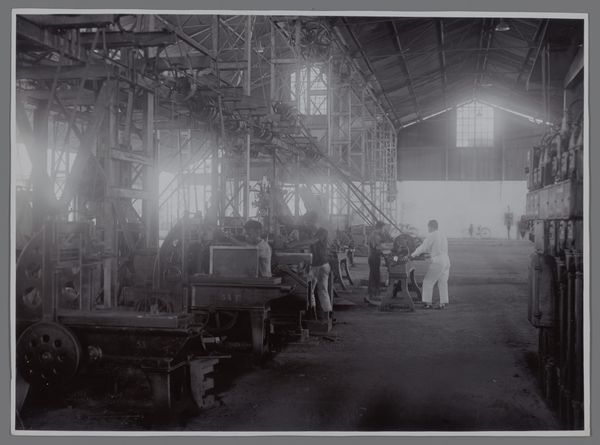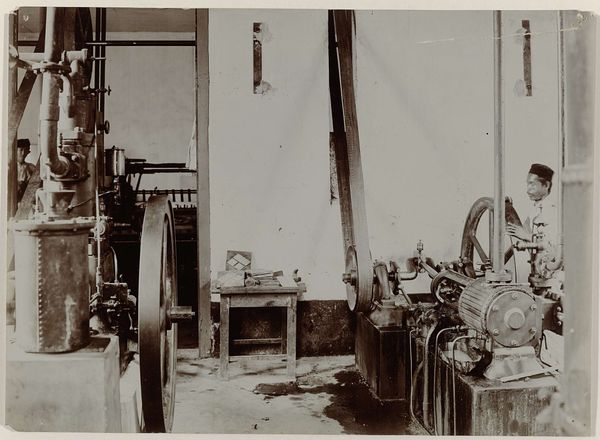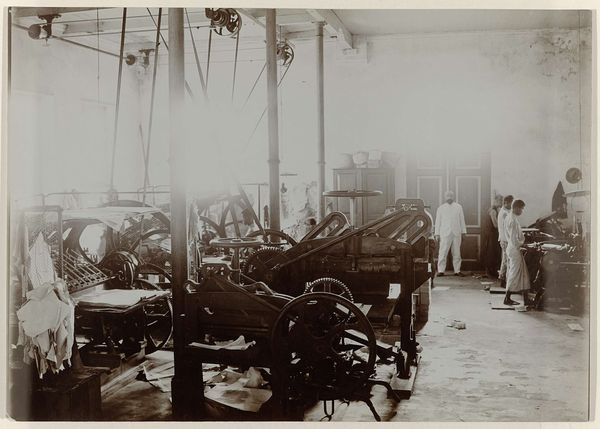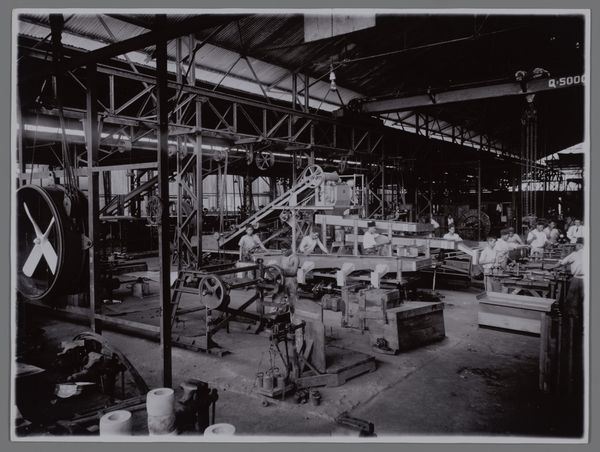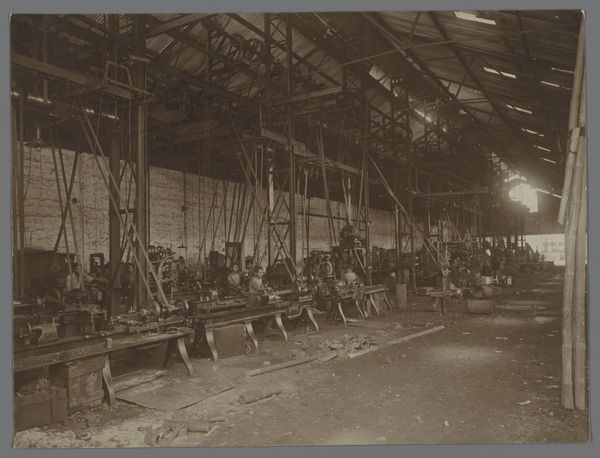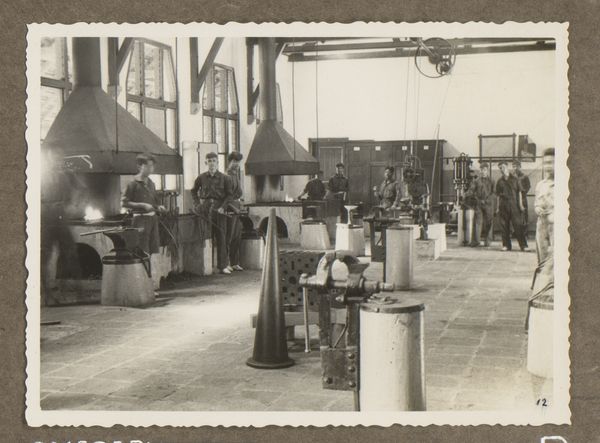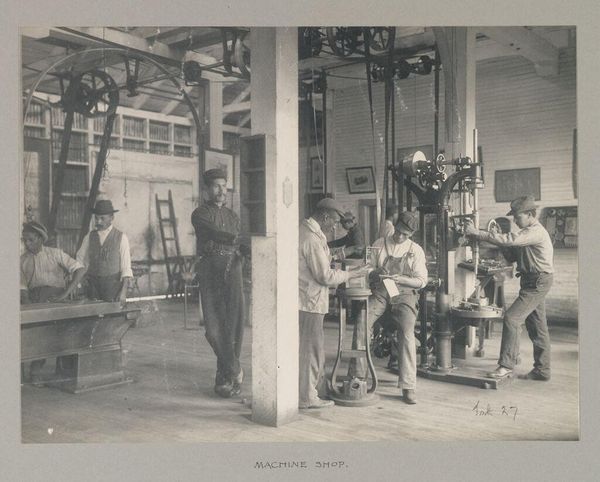
photography, gelatin-silver-print
#
still-life-photography
#
photography
#
gelatin-silver-print
#
realism
Dimensions: height 70 mm, width 111 mm
Copyright: Rijks Museum: Open Domain
Editor: This is "Draaibanken van de Technische School te Bandoeng," a gelatin-silver print from 1933. It’s a photograph of, well, lathes! What's striking to me is how it treats industrial equipment with a similar reverence that still life paintings usually reserve for domestic objects. How do you interpret this work? Curator: I see here a careful documentation of the means of production. The focus is undeniably on the machines themselves, these imposing tools that define labor and shape society. It’s fascinating to consider how the photographer frames them. Are they presented as instruments of progress, or do you detect any implicit critique of industrialization, or perhaps colonialism considering the location? Editor: I hadn't thought of it in those terms... more of an objective snapshot. But the setting itself is key. Bandoeng was, at the time, a Dutch colony. The presence of this technical school speaks to the industrialized, colonial structure and transfer of technology. Curator: Precisely! Think about the material implications: the origin of the raw materials for these machines, the labor conditions surrounding their manufacture and transportation, and who ultimately benefited from the skills taught here. Consider this work a commentary on the socio-economic fabric of the time. Does that shift your perspective? Editor: Definitely. The photo is beautiful, the realism striking, but I agree, you can't separate it from its social context. It is about power, technology, and who controls the means of production. Curator: Exactly! Art offers us the chance to critically examine the world around us. This image, seemingly simple, presents a very dense meditation on that world. Editor: It certainly does, looking more closely, thank you!
Comments
No comments
Be the first to comment and join the conversation on the ultimate creative platform.
